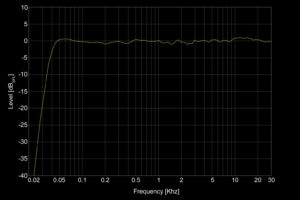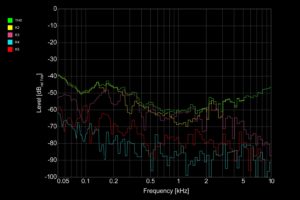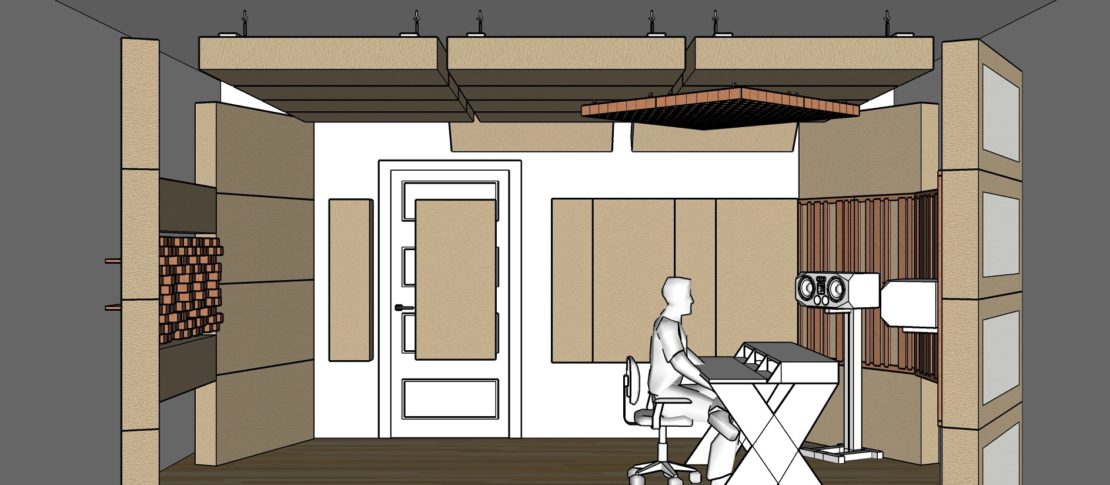
Do I Need Acoustic Treatment For My Home Studio Setup?
We get asked this question a lot. Acoustics, and the physics behind it, can be a daunting subject. In this article, we are going to simplify home studio acoustics, break it down into simple, useful strategies, and give you the knowledge to create the best possible acoustic environment for your home studio.
Understanding home studio acoustics
No matter the size of your space, these four principles will set you on your way to having a great-sounding home studio:
- Treat areas of your room in this specific order:
- early reflections (sidewalls and ceiling)
- rear wall
- front wall
- corners
- late reflections
- soffit corners
- Depth makes acoustic panels work at low frequencies. There is nowhere in your room that will be better suited to a 2” deep acoustic panel than a 4”, 6”, or even 8” deep panel.
- Creating gaps between acoustic panels and the surface they are installed on will increase their performance.
- You don’t have to treat everything at once. Follow these steps and make the most of your budget to get the deepest panels you can. Once you have more money, you can continue adding additional acoustic panels and bass traps.
Important questions to consider
If you’re beginning your studio treatment process, ask yourself the following questions about your space:
- How big is the room? What is the layout? Are there any physical limitations such as windows or doors? How much space do you have for acoustic treatments?
- What do you want to use the room for – mixing, recording, producing, or writing?
- What are your goals for the treatment of your studio: Do you need a great-sounding space to record? Do you want to even out decay times?
- How much can you invest in acoustic treatments?
Let’s put these questions and principles into action. Below are some examples of small, medium, and large home setups treated with budgets from between $500 and $10,000. For each of the following examples, the primary use of the studio is mixing.
Small Home Studio – Budget: ca. $ 500
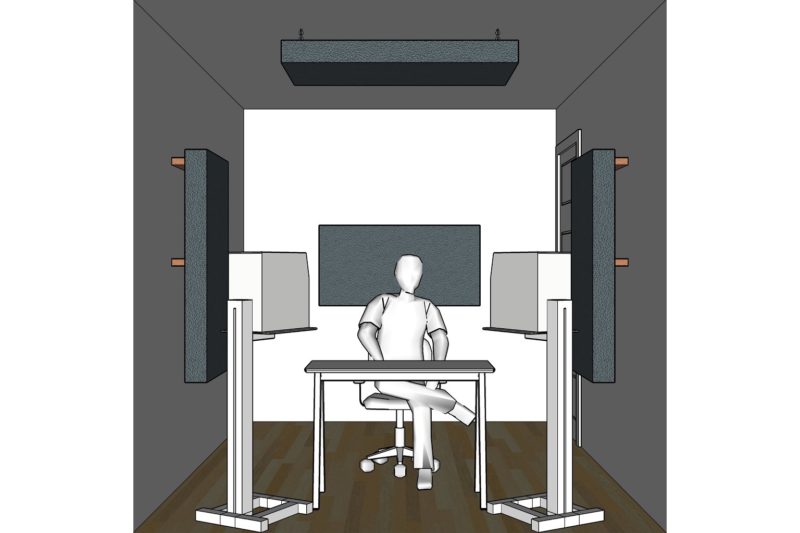
- Acoustic Treatments: 4 x Broadband Acoustic Panels
- What this treats:
- Early reflections
- Even with a minimal set up like this, you can treat the early reflections on the left, right, and rear walls as well as the ceiling.
- This will improve stereo imaging, add definition and clarity to you monitoring, and start to tame the echo and reverb in your room.
- There is a lot to still be improved upon, but you will be off to a great start having a room that you can begin to learn and trust!
- What this doesn’t treat:
- Secondary and late reflections, SBIR, low frequencies
- Left untreated, the secondary and late reflections will result in the room being fairly live sounding. This can make changes in eq, compression, and effects hard to hear as the reflections in the room will mask some of the direct sound from your speakers.
- The lower frequencies. Broadband Acoustic Panels installed with a 4″ air gap will work very effectively down to around 120 Hz. Below that, the room is effectively untreated for now. The low frequency response in the room will lack balance and the decay of lower frequencies will be extended. We hear this as a lack of clarity, definition, and tightness in the bass.
Small Home Studio – Budget: ca. $ 1,200
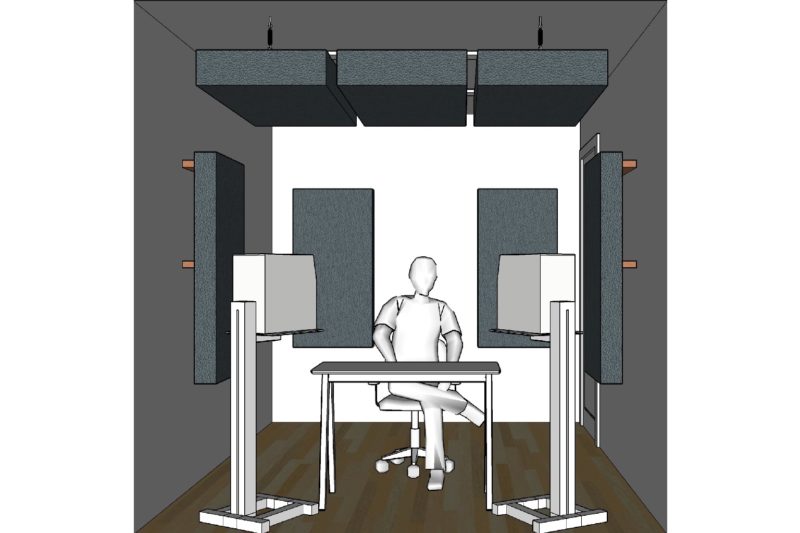
- Acoustic Treatments: 3 x Bass Trap Panels, 4 x Broadband Acoustic Panels, 4 x Easel Acoustic Panel Stands
- What this treats:
- Floor/Ceiling Mode
- Early reflections
- Swapping out the smaller Broadband Panel Cloud for a larger one made up of Bass Trap Panels will make a world of difference to your monitoring experience. Home studios are plagued by low ceilings which result in a large bump at 115Hz to 150Hz depending on the ceiling height. A ceiling cloud made up of Bass Trap Panels is deep enough to smooth this out, freeing you up to focus on the music and creativity!
- With two additional Broadband Panels, the rear wall early reflections can now be treated as well. This will not only reduce echo/reverb and balance out the mid and high frequencies but also start to smooth out some of the SBIR cancellations from the rear wall. The panels are shown on the EAPS stands to provide easy adjustability and an air gap but they can be wall mounted as well.
- What this doesn’t treat:
- Front to back and left to right axial modes, balancing low frequency decay times, speaker boundary interference reflections, late reflections
- There will still be imbalances in the low frequencies, but overall, the monitoring will really start to balance out and sound sharp, tight and clear. As you can see in the images, there are still a large number of untreated surfaces that have the potential to cause Speaker Boundary Interference Reflections. These are responsible for the extremely sharp dips and peaks in the frequency response of most rooms.
Small to Medium Home Studio – Budget: ca. $ 2,200
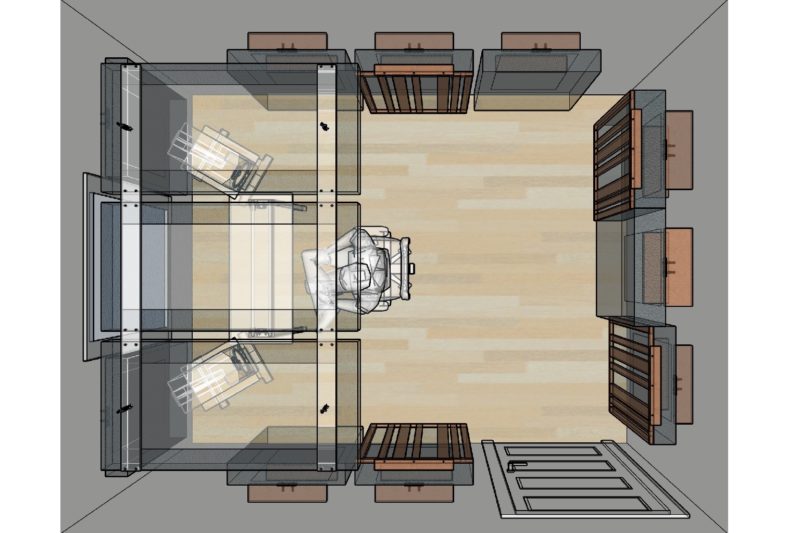
- Acoustic Treatments: 7 x Bass Trap Panels, 6 x Broadband Acoustic Panels, 4 x Easel Acoustic Panel Stands
- What this treats:
- Floor to Ceiling and Front to Back Modes, Early reflections, Front Wall SBIR, Rear Wall
- Now we are getting to the point where this would be a great room to work in day in and day out. All of the critical surfaces are treated, and the low-mid and low frequencies will be well controlled by the Bass Trap Acoustic Panels.
- What this doesn’t treat:
- Low frequencies will still be decaying at a longer rate then mid and high frequencies. This will leave the room lacking a bit in balance and definition in the low end. Ceiling reflections in the back half of the room.
Small to Medium Home Studio – Budget: ca. $ 4,500
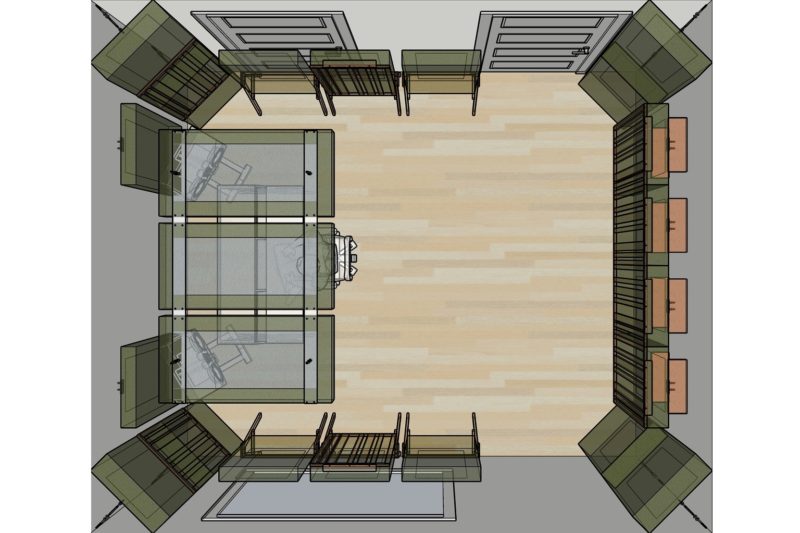
- Acoustic Treatments: 15 x Bass Trap Panels, 8 x Broadband Acoustic Panels, 8 x Scatter Faces, 6 x Easel Acoustic Panel Stands
- What this treats:
- Floor to Ceiling and Front to Back Modes, Early reflections, Front Wall SBIR, Rear Wall, Corners
- With the introduction of corner Bass Trap Panels, we will start to see the low frequency decay times in the room come into check. The Scatter Faces will prevent the room from being too dry in the mid and high frequencies providing a balanced decay time throughout the frequency response. This is the mark of a great mixing or critical listening environment!
- What this doesn’t treat: The list of things left untreated is getting pretty short now. The only critical missing piece here is the ceiling in the back half of the room. Left untreated, the surface will cause distracting echoes in the back half of the room as well as contribute to late reflections that will distort the sound field at the listening position.
Medium Home Studio – Budget: ca. $ 10,000
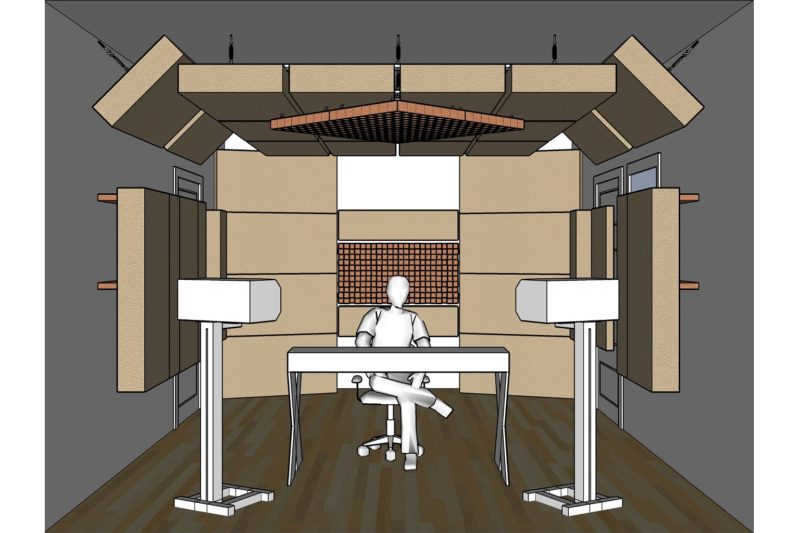
- Acoustic Treatments: 37 x Bass Trap Panels 4’ x 2’, 5 x Bass Trap Panels 4’ x 1’, 2 x Hi-Mid Acoustic Panels, 6 x Scatter Faces, 4 x Space Coupling Diffusers, 2 x Primitive Root Diffusers
- What this treats:
- Everything!
- For a home studio this is pretty much the dream set up! The doors and windows are in positions that still allow for treating the critical early reflection points and large corner bass traps. Note the corers are still treated with the 4’ x 2’ x 6.5” Bass Trap Panels but they are now oriented horizontally greatly increasing the air gap behind them making them effective all the way down to 40 Hz! The ceiling/wall corners are treated as well, providing even more low frequency decay time control.
- Not only is this room large enough for the additional low-end absorption, it has the depth needed to make rear wall diffusion highly effective. The Primitive Root Diffusers on the back wall will work with the Scatter Faces and Space Coupling Diffusers to deliver and beautifully balanced, defined, and accurate monitoring environment.
- What this doesn’t treat: This pretty much covers it all! We hope you have the opportunity to have a home studio as inspiring as this one day!
Conclusion
Do I need professional-standard acoustic treatment in my home studio? That’s up to you. It all goes back to your desired goals for your studio space. Rooms can cause distortions to
frequency response and produce massively uneven decay times. Acoustic treatments balance the frequency response and smooth out decay times – creating a more reliable, accurate working environment.
The space you work in doesn’t affect your creativity. If you can’t afford to treat your space, don’t worry. You may need to take a few trips to the car to finish your mix, but everyone has to start somewhere.
If you can afford to treat your studio, you’ll be able to trust what you’re hearing, work faster, and be more confident in your productions.
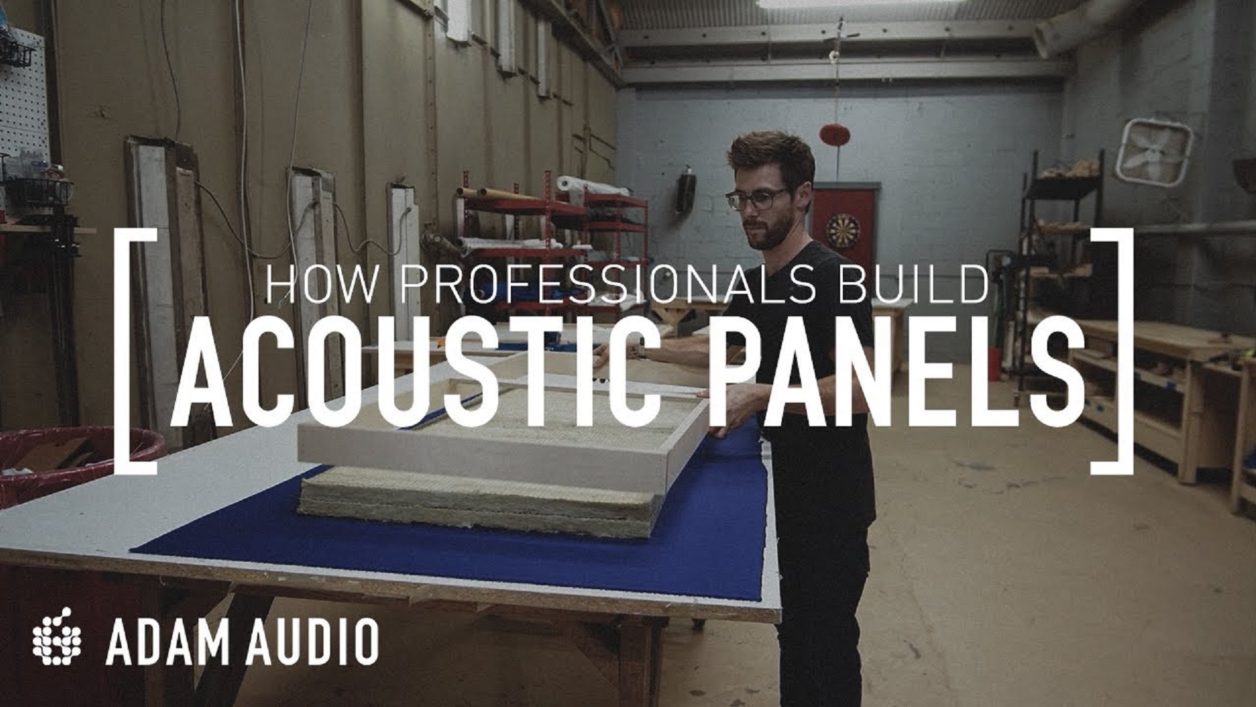
By loading the video, you agree to YouTube's privacy policy.
Learn more
